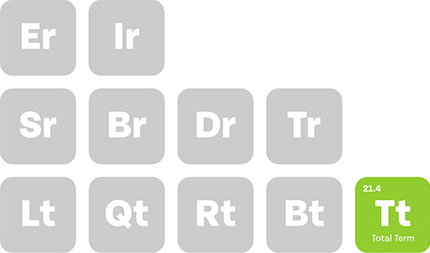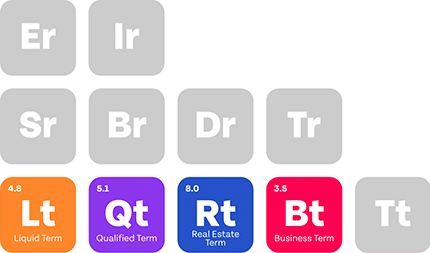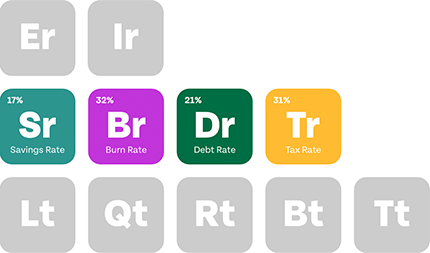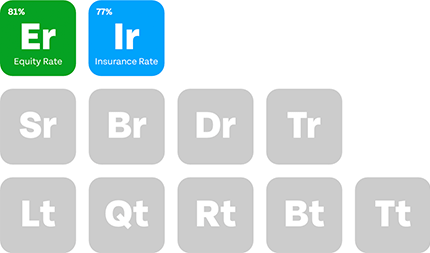Everyone understands the importance of having health insurance and life insurance.
But as a physician earning a sizable yearly salary, there’s one other type of insurance policy you need: disability insurance.
If you become ill or disabled and can’t do your job, disability insurance will protect your assets and provide income for your family.
But how much does disability insurance cost?
This article discusses the average cost and some of the factors that can impact the price tag.
Our disability insurance experts can help you find the best plan for you. Contact Physicians Thrive today to connect with one of our specialists.
Key Takeaways
- The average cost of disability insurance lies in the $290-$900/month range.
- The exact cost depends on the medical specialty, coverage, elimination period, age, health, location, included policy riders, and more.
- Generally, the cost increases with the risk of falling under disability, as defined in the insurance policy.
- Physicians Thrive’s services can help you pick the perfect disability insurance policy for your exact needs.
Table of Contents
What Is the Average Cost of Disability Insurance?
The cost of disability insurance ranges between $290 and $900 per month, depending on various factors.
Experts estimate that, on average, disability insurance will cost you between 1% and 3% of your annual salary.
So, if you’re earning the average physician salary of $350,000, that means you can expect to pay between $290 and $900 per month.
The range is so large because many factors can affect the overall cost. Here are a few examples:
- Your medical specialty
- How much disability coverage you need
- Length of the waiting period
- How your insurance policy defines “disability”
- Your age
- Your health
- Where you live
- The addition of optional riders
In the sections below, we’ll discuss how and why each of these factors impacts the cost of disability coverage.
Let Physicians Thrive help you find the best deal on disability insurance!
How Does Medical Specialty Affect Disability Insurance Rates?
Certain specialists, such as surgeons, pay more for their disability insurance, as their disability insurance would require broader coverage due to the nature of their job.
In terms of how much you’ll pay each month, your medical specialty is one of the most significant determining factors.
Physicians in certain specialties are more likely to be unable to perform their duties if they become disabled.
For example, let’s say you have a partial disability like a slight tremor in your hand or issues with the joints in your fingers.
If you’re a surgeon, an unsteady hand means that you will not be able to perform surgery.
However, if you’re a primary care physician in family practice, a shaky hand will not prevent you from doing your job.
Physicians in these specialties usually pay more:
- Emergency room physicians
- Anesthesiologists
- Registered nurses
- Surgeons
- Podiatrists
- Obstetricians
Physicians in these areas usually pay the lowest rates:
- Diagnostic radiologists
- Primary care physicians
- Gastroenterologists
- Internists
- General practitioners
- Dentists
How Much Coverage Do You Need?
The amount of money you spend on benefit coverage per month, which determines the range of your coverage and benefit period, has to be carefully planned according to your monthly income and expenses.
The more disability benefits you want to receive each month, the more you’ll have to pay in monthly premiums.
To determine how much disability insurance you need, ask yourself the following questions:
- What are your responsibilities (mortgage, insurance premiums, credit cards, debt, etc.)?
- How much savings do you have?
- Do you want to continue saving while receiving disability payments?
Then ask yourself the following:
How long can I afford to be without an earned income? With my current savings, how much time can I wait between becoming disabled and collecting benefits?
To receive a benefit amount of $10,000 per month, you can expect to pay between $200 and $500 in premiums.
If you’re making approximately $16,000 per month ($192k annual salary), you can max out your benefits at approximately 60% of your pay (about 10k).
So, you’ll need to do the math to determine how long your savings can sustain you.
The size of your savings will also be an important factor in determining your policy elimination period.
Related: Types of Disability Insurance For Physicians: Your Full Breakdown
How Long an Elimination Period Do You Need?
The elimination period should be about as long as you believe you could leave on your savings before becoming eligible to receive the benefits.
The disability elimination period is the time between the day you become disabled and the day you are eligible to start collecting benefits.
This is also referred to as the waiting period. It can be as short as a 30-day elimination period and as long as two years.
Knowing the length of time you can live on your savings is key to selecting the proper elimination period.
The longer the waiting period, the lower the monthly premiums. The shorter the waiting period, the higher your monthly premiums will be.
In other words, the more savings you have and the longer you can wait to collect benefits, the less you’ll have to pay each month.
Know How Your Policy Defines “Disability”
Knowing the exact definition of “disability” under your disability insurance policy is essential for determining the policy’s range and, therefore, cost.
The definition of disability varies from policy to policy. Some policies require that your disability prevents you from working in “any occupation.”
Own-occupation policies require that your disability prevents you from working in your “own occupation.”
This definition is preferred — but it’s more expensive.
With the “own occupation” definition, your illness or injury must prevent you from working in your current specialty.
The “any occupation” definition simply means that you can’t work in any job.
The “any occupation” definition is harder to qualify for — so this definition always results in lower monthly premiums.
Related: Does Disability Insurance Cover Mental Health and Substance Abuse?
How Old Are You?
Younger physicians pay less for disability insurance, while older ones pay more due to different risks of disability.
When the insurance provider starts underwriting your policy, one of the first things they will take into consideration is your age.
Younger physicians pay less, and older people pay more. That factor remains the same regardless of your policy or provider.
Rates also increase as you age.
For example, let’s say you take out a policy at age 30. By age 40, you’ll be paying more. By age 50, you’ll be paying even more.
Rates increase by approximately 3% to 5% per year as you age.
For example, a male physician with a $5,000 per month policy may pay approximately $1,100 each year at age 30.
By the time he’s 60, he’ll be paying close to $3,000 each year for those same benefits.
The yearly increases may vary slightly among providers, but they are generally very similar.
Why Do Young People Pay Less for Disability Insurance?
There are two main reasons that younger physicians pay less for disability insurance.
Younger physicians have a lower risk of becoming disabled. And that means that you’ll spend more years paying premiums than physicians who wait until they’re older to get a policy.
Are You Healthy?
Physicians with pre-existing health conditions will have to pay higher insurance rates.
As with age, your current health condition will also determine your monthly premiums.
Physicians with a pre-existing condition, even if they’re young, will pay more than those without an existing medical condition.
And even if you’re in perfect health, older doctors will still pay more.
The older you are, the more likely you are to suffer an injury or disability that could prevent you from working.
Where Do You Live?
Insurance prices broadly range across US states, with the prices generally being in proportion to the cost of living.
Every state in the U.S. has regulations for insurance providers and policies, and the rules in some states are much stricter than in others.
The more regulations there are in your state, the fewer choices you’ll have in selecting providers.
With fewer choices and less competition, disability insurance policies tend to be more expensive.
The more providers that operate in your state, the more types of disability insurance you’ll have to choose from, and the more competitive they’ll be.
The cost of living in your state is also a factor. The higher the cost of living, the more you can expect to pay in monthly premiums.
A higher cost of living means the insurance policy will pay you a higher coverage amount, causing an increase in your rates.
Adding Policy Riders Will Increase Your Costs
Extra policy riders, such as a COLA rider, future purchase rider, student loan rider, or catastrophic disability rider, also increase your insurance costs.
Many disability insurance policies can be underwritten with additional and optional riders attached.
These riders offer added benefits, but the average cost of your premiums will be more expensive for every single one you choose.
It’s essential to weigh the pros and cons of adding these riders. In many cases, the extra cost is well worth the added benefit.
Here are some of the most common disability insurance riders and why they’re so important:
Cost of Living Adjustment Rider
All insurance providers offer the COLA rider. This rider is designed to increase your monthly benefit while disabled as the cost of living increases over the years.
In other words, your benefits increase along with inflation.
Based on the Consumer Price Index, this rider pays you an increased monthly benefit while under a long-term disability insurance claim.
It is most beneficial to physicians who are disabled in a way that would cause them to have benefit periods that last years or even decades.
Future Purchase Rider
Offered by all providers, the future purchase rider allows you to increase your insurance coverage in the future, regardless of health.
It is ideal for residents, fellows, and young physicians who expect to earn more income in the future and plan to need more coverage as they age.
Regardless of your health, this rider allows you the option to increase coverage. You pay higher premiums, but it is worth it if you plan to make more income in the future.
Student Loan Rider
Not all insurance providers offer the student loan rider, but it’s a smart option for young physicians who are still paying off student loans.
If you end up disabled while still paying back college or medical school loan debt, this will cover the cost of your monthly loan payments.
This is only important for physicians who still have active educational debts.
Catastrophic Disability Rider
Most insurance providers offer the catastrophic disability rider.
With this rider, you’ll be paid even more benefits than your disability policy states — in the event that you suffer a catastrophic disability.
To qualify for the “catastrophic disability” benefit, you’ll need to be able to prove that you are unable to perform two basic daily activities.
This rider is usually less expensive than the other riders, and it can pay you an additional 50% of your benefit each month.
You might also be interested in: Group Disability Insurance through the AMA
Individual disability insurance plans can be expensive, but forgoing it can be devastating to your finances and way of life.
Wrapping Up
Several main factors determine how much your insurance policy will cost. These include your age, health, medical specialty, and the state you live in.
The other factors are coverage amount, how the policy defines “disability,” the elimination period, and optional riders.
If you’re a physician looking for disability income insurance, compare policies and providers to make sure that you’re getting the best rates and the best coverage for your money.
After all, buying insurance means buying peace of mind.
An inexpensive policy may be appealing, but insufficient coverage will leave you at a serious disadvantage if and when you need to make a disability claim.
Physicians Thrive’s advisors work in a fiduciary capacity to help you choose the right disability plan by gathering quotes and running comparisons across all physician disability insurance providers. Get a free quote today!
Subscribe to our email newsletter for expert tips about finances, insurance, employment contracts, and more!






































